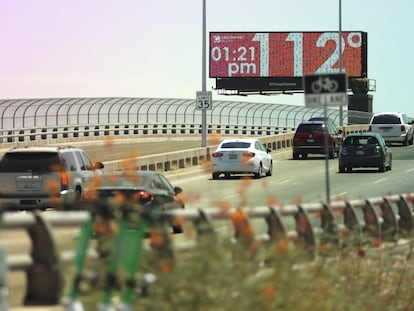In Phoenix, 4.5 million residents are living in hell: this is life at 113 degrees for more than 20 days
In the capital of Arizona – with extreme temperatures that can reach 122°F during the day and don’t drop below 90°F at night – life is almost impossible. If blackouts were to knock out the air-conditioning, nearly half the population could end up hospitalized
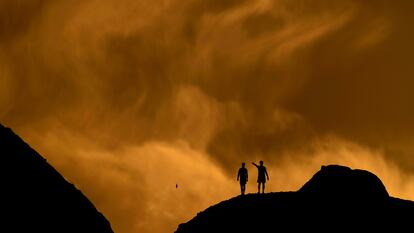
Hardly anyone walks the streets and wide avenues of Phoenix these days. The few sidewalks in the capital of Arizona– wide and clear – have become decorative. The fifth-most populous city in the United States is a desert… literally and figuratively.
Phoenix has been breaking heat records, with temperatures averaging 110 degrees Fahrenheit for more than 20 days in a row. 113°F is often exceeded. And the nights aren’t much better, with temperatures not dropping below 90°F. It hasn’t rained in four months.
Living in such an environment is almost impossible. It requires strict routines and lots and lots of water. When you reach Phoenix, within just a few minutes, your lips start to crack. Your mouth dries up, then your skin. Even your phone will start to complain – it’s too hot even to charge. Headaches are common – the body screams as it tries to recover from the brutal impact of the heat wave. And it’s so dry that you barely sweat… a condition that conceals dehydration.
The local news repeats the same advice over and over again: drink water, not just soda; stay in cool places; do not exercise outdoors. The heat emergency is so serious that the City Council has a specific department to warn citizens and respond to those who have fallen ill: the Office of Heat Response and Mitigation.
Gerald, a local resident, doesn’t know much about that office, nor is he interested in it. He’s been waiting in the sun for 20 minutes at 111°F. At 60, this Native American citizen affirms that he prefers the climate of his hometown, which is located further north, “where there are really four seasons,” he jokes. He’s the only one at the bus stop. At one point, while waiting, he moved into the shade of a few trees on Camelback Avenue. “I don’t like this; nobody likes it in summer, but you have to work,” he shrugs. He’s been living in the city for five years and sold his car, he mumbles, because it was too expensive to maintain. “A wreck.” Even so, he hasn’t gotten used to the heat. But really, nobody can get used to living at 122°F. The body can’t handle it.
This is how one of the meteorologists at the Phoenix office of the US National Weather Service explains it: Jeral Estupiñán affirms that these temperatures are only normal “in Dubai, in Kuwait.” Born in Spain, he’s been a meteorologist in the US for more than 40 years. He tells EL PAÍS that it’s still difficult to educate people about the risks of heat: “When the body rises above [99°F], it overheats… there can be permanent damage to the liver, brain. You have to avoid being exposed to that heat and hydrate lots.”
For him, more than simply informing the public, his task is to provide an alert. Beyond the phenomenon known as El Niño, he attributes this episode to the idiosyncrasies of the city itself. “Phoenix is a city that isn’t very high, it’s only about 980 feet above sea level. We’re surrounded by mountains, without vegetation, with rocks and a continuous sun, with an intense solar angle. Then, there’s the type of construction, the roads, the cement,” he reflects.
It’s true that Phoenix is colored gray and brown, with very little vegetation. The city’s most popular tourist attraction, in fact, is the Desert Botanical Garden: a cactus garden. Right now, visitors are only permitted to visit until two in the afternoon, due to the heat.
But why is this happening specifically in Phoenix? Randy Cerveny – head of the Faculty of of Geography at Arizona State University – explains that there are four causes that exacerbate the heat in Phoenix: “First, [the city is] in the Sonoran desert, which causes very high temperatures. Then, as a city with almost five million inhabitants, the buildings and roads generate more heat. Third, there’s really powerful air pressure over the southwestern US. And fourth, our usual summer storm season is late this year.”
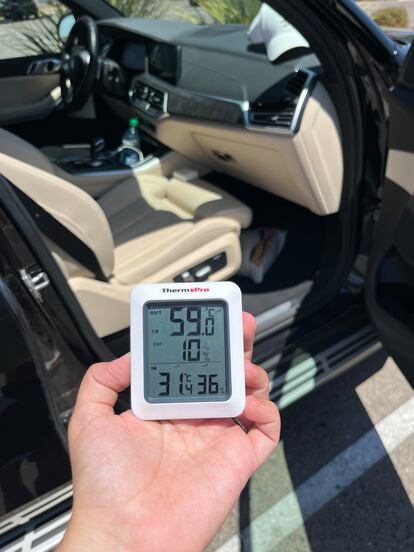
Without water, there’s no freshness or relief. Surviving 122°F at home or in a car is extremely difficult, especially when there isn’t even any relief at night. Sleeping is impossible without air conditioning, which means that these devices are kept on at all hours (if a resident can afford it). According to data from the municipal government, electricity consumption records are constantly being broken. The last one was smashed on July 15, when the temperature exceeded 118 degrees.
Consequently, electrical bills have risen by 12% on average… and residents have taken notice. Kyle Tokasey has worked at the Montauk restaurant for two years – he says that, these days, they have half as many customers as usual, but they use twice as much electricity. With such extreme temperatures, they cannot afford to turn off the refrigeration. Meanwhile, there are hardly any bachelor parties or graduations being booked. His terrace – even with all the water diffusers – is empty. “I’ve only had one table all day. It was a very young couple, I think they were looking for privacy,” he laughs. Tokasey is overwhelmed by the situation, but also relieved not to have to attend to so many customers outside.
104-degree nights
At 10 PM in Phoenix, it’s 104°F. The nights are complicated. The asphalt is still hot – the metal buttons on the traffic lights burn. Chairs aren’t brought out into the street, even after dark. The downtown’s club district – with popular spots such as HiFi and Whiskey Row – is usually packed between October and May… but it’s never been emptier in the summer. Maybe at midnight, terraces will have a few customers. “It’s better to work at night – you sleep through the day,” acknowledges Tyler, the doorman at El Hefe, as he asks for documentation from twenty-somethings eager to drink $16 margaritas. “But this is very empty, yes. Less than half [the usual crowd].”

It’s not even midnight and 26-year-old Ashley and Emily are already leaving downtown. Emily drives; Ash doesn’t feel like jogging. Ash explains that her family recently moved from California to Arizona. She’s been here for six years and doesn’t want to leave. “Even going to the pool is useless. It’s broth. You spend months living like this,” she sighs. She’s wearing a tank top, jean shorts and black flip-flops. “But I guess it pays off in the end.”
For those who don’t want stuffy car rides, golf carts circulate around the area, transporting people to hotels, shopping centers and residences at all hours of the day and night. Daniella Megía, 25, has been driving one for a few months. Working part-time (mostly picking up drunks) she earns $400 a day. Her full-time colleagues pull in $900. Lots of heat… but lots of money. “You have to drink a lot of water,” she says with a smile, surrounded by half-filled bottles. “It’s one of the hardest jobs, yes, but people want [the service]. I can’t quit.” It’s nearly 3AM – 99°F – and she’s still working.
If the nights are bad, the days can be simply deadly. According to a report released in May by the American Chemical Society, running out of power could be a death sentence for the city.
A blackout in a heat wave would mean that half of the population of Phoenix could end up requiring medical care, something unaffordable. The city has 1.6 million inhabitants… but with its metropolitan area – Maricopa County – the total hits 4.5 million. And, despite the efforts of Presidents Obama and Biden in the form of the Affordable Care Act, about 27 million Americans – 8.6% of the population – still don’t have any health insurance at all, while millions of residents don’t even have documentation.
One of the main problems in Phoenix is homelessness. Municipal data states that, in 2022, there were some 3,100 homeless people in the city. Of course, there are probably many more, as the counts aren’t entirely accurate and because the population grows every year. To help those who don’t have air-conditioning, proper resources, or a roof over their heads, the city has created a heat relief network.
Medina Zick runs one of nearly 200 heat relief centers. Specifically, the Mustang Public Library, in Scottsdale, east of the city. All kinds of places have been turned into heat relief centers, including community centers, residences, libraries and churches. These centers can each have up to four functions, operating as refreshment centers (offering AC), hydration stations, rest places and collection points (offering food, bottled water and clothing). The Mustang Public Library offers the first service: anybody can stay within the facility – which is kept below 77°F at all times – for as long as they wish. Free fresh water is also provided. Zick laments that they cannot be considered a rest center: while there are chairs and sofas, there are no places to lie down.
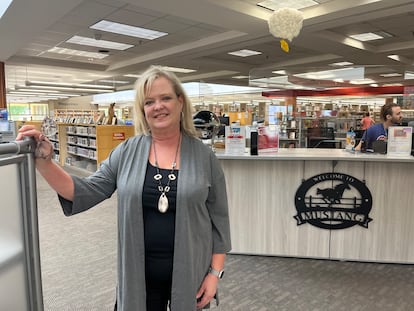
“The heat is a huge concern,” the librarian laments. She has more than 25 years of public service behind her, four of them in this center, which is supported by taxes and private donations. The library she administers is open seven days a week. “Here, we not only have books – we create community. Whoever wants to can come sit down, rest, cool off. Many homeless people come to charge their phones, or spend the day watching DVDs on our computers.” In a country where consumption is king, Zick has one of the keys to making these centers so successful: “Here, you can spend all day without buying anything at all. And no one is going to kick you out.”
Nobody needs to have an ID to use these facilities. For those who don’t have a car, there’s transportation available to take them to the centers for free: you just need to dial 211. Public servants have prepared hygiene kits for those who need them, as well as toiletry bags that include toothbrushes, toothpaste, shampoo, combs, handkerchiefs, wipes and bandaids.
A couple of times a year, the Mustang Public Library delivers backpacks to help combat period poverty. But the city still has a long way to go when it comes to supporting vulnerable people. “In Phoenix there are very few shelters – it’s impossible to live here without electricity. There are older folks trapped in their homes, with very expensive rents, who cannot pay for electricity. People are dying. We have to try to help,” Zick says. According to data from the heat relief network, in 2022, there were 339 heat-related deaths in Maricopa County, with four out of five being men. This was 5% more than in 2021 and 70% more than in 2020, the year of the pandemic.
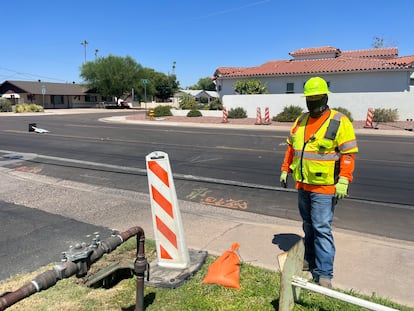
It’s impossible to enjoy Phoenix, just as it’s impossible to work, walk, or live in the city. Neither in the outskirts nor in the most touristic center. Souvenir shops are empty; the ice cream parlors, half-fill, serve pink ice sorbet, in honor of the premiere of Barbie. Warm brownies certainly aren’t in season .
Katie, 27, and Savannah, 21, wear black T-shirts and long pants under a navy blue plastic canopy. They’re trying to raise money for cancer, between the hours of 10:30AM and 6PM… meaning that they face temperatures that hover around 105°F throughout the day. They have several huge water bottles to keep up their energy. “People are nice – they bring us ice cream, water,” the young women explain. Still, they have to take breaks, heading into a nearby shop to have a soda.
There’s no one in the parks, either. Vista del Camino is one of them: it has a meadow and children’s swing set. It’s two in the afternoon and the thermometer reads 115ºF. On the dashboard of the car, it’s even worse: it reads 122ºF. It can’t go any higher. A temperature gauge – brought from home – says that it’s actually 138ºF inside the car.
Next to the park is a lake: even the ducks have disappeared. There are no animals on the streets – nobody is walking their dog. Claudia Morales – whose 25 years in Arizona haven’t shaken her Chilean accent – says that she often has to warn the clients of the hotel where she works not to take them out for a walk. “Their legs get burned; the poor animals come back all sore. You have to put little shoes on them.” She has a foster cat that sleeps in the shade of her garden. “Everything [in the garden] turns yellow. And watering is impossible, water is expensive. I can’t stand it in the garden for long either… I get all red in five minutes.”
But as impossible as it may seem, there are tasks that need to get done. After two in the afternoon, it’s already more than 113°F, but Christopher Nectsosie is working away on the asphalt. He wears long jeans, cowboy boots, long sleeves, a vest, gloves and a helmet. This seems overwhelming, “but skin cancer isn’t a joke,” he notes, smiling despite everything.
He’s managing traffic, as the road is under construction. It’s his first year doing this job, where he starts at five in the morning (5:30AM, to be precise) and takes multiple shifts that last between 30 minutes and an hour. “It’s well paid,” he shrugs.
Meanwhile, the traffic continues. A city without citizens – an immense reddish-brown stain that doesn’t stop. A hint of an almost apocalyptic future in which living – and even surviving – seems like a dream.
Sign up for our weekly newsletter to get more English-language news coverage from EL PAÍS USA Edition
Tu suscripción se está usando en otro dispositivo
¿Quieres añadir otro usuario a tu suscripción?
Si continúas leyendo en este dispositivo, no se podrá leer en el otro.
FlechaTu suscripción se está usando en otro dispositivo y solo puedes acceder a EL PAÍS desde un dispositivo a la vez.
Si quieres compartir tu cuenta, cambia tu suscripción a la modalidad Premium, así podrás añadir otro usuario. Cada uno accederá con su propia cuenta de email, lo que os permitirá personalizar vuestra experiencia en EL PAÍS.
¿Tienes una suscripción de empresa? Accede aquí para contratar más cuentas.
En el caso de no saber quién está usando tu cuenta, te recomendamos cambiar tu contraseña aquí.
Si decides continuar compartiendo tu cuenta, este mensaje se mostrará en tu dispositivo y en el de la otra persona que está usando tu cuenta de forma indefinida, afectando a tu experiencia de lectura. Puedes consultar aquí los términos y condiciones de la suscripción digital.
More information
Archived In
Últimas noticias
Maduro to be tried in the US for narcoterrorism and corruption
Maps of the US attack on Venezuela: Targets, airspace and deployed fleet
Venezuelans in exile: ‘This could be the end of a very dark chapter for Venezuela, but also the beginning of a time of uncertainty’
Key points of the military attack on Venezuela: Early morning bombings and a ‘captured’ president
Most viewed
- Alain Aspect, Nobel laureate in physics: ‘Einstein was so smart that he would have had to recognize quantum entanglement’
- David King, chemist: ‘There are scientists studying how to cool the planet; nobody should stop these experiments from happening’
- Mexico completes its trade shift with the entry into force of tariffs on China and countries without trade agreements
- Reinhard Genzel, Nobel laureate in physics: ‘One-minute videos will never give you the truth’
- Oona Chaplin: ‘I told James Cameron that I was living in a treehouse and starting a permaculture project with a friend’

